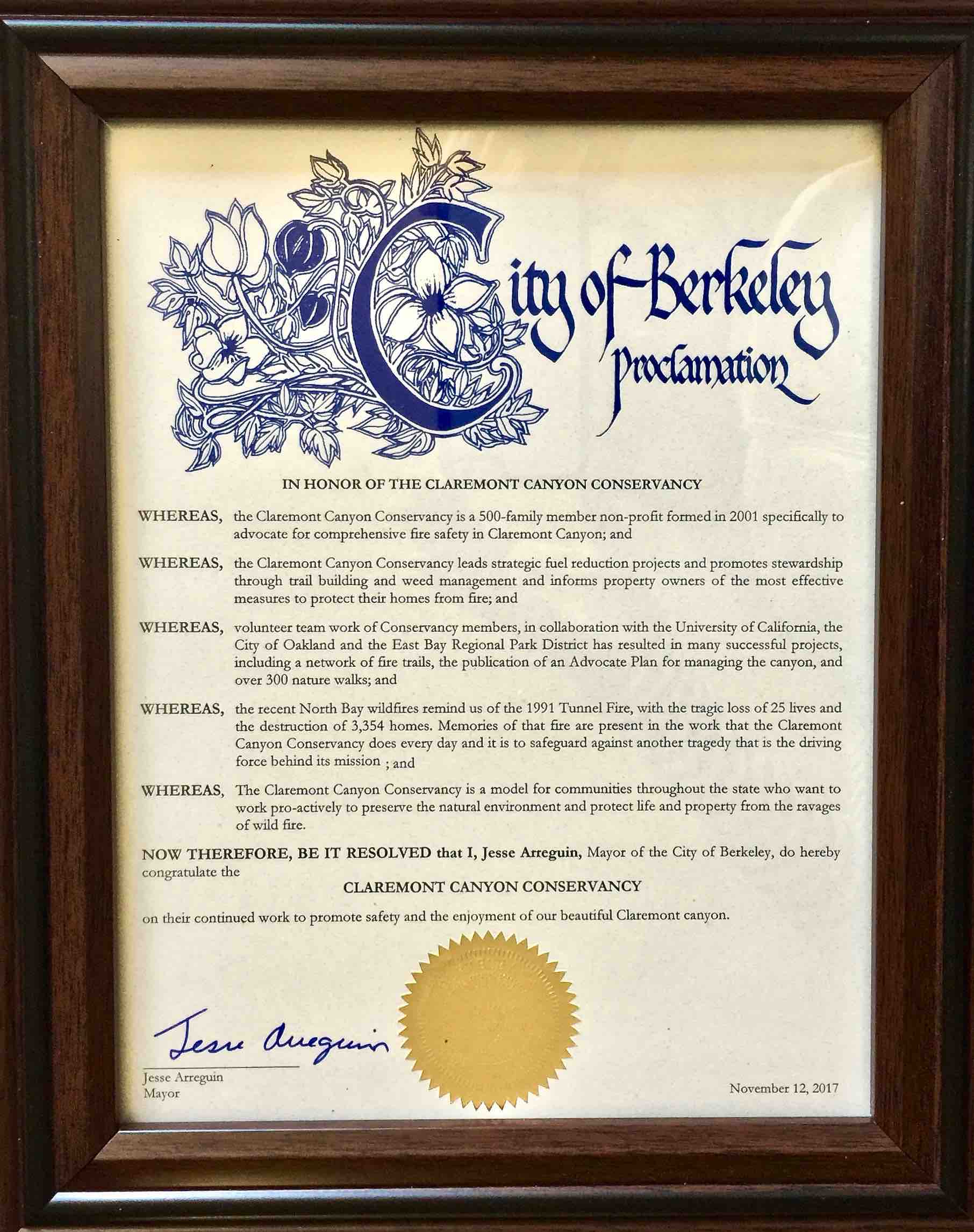Members Tell Us What They Think - Summary of findings from 2018 Survey (click here to download tabulations).
On November 12, 2018 we began an online survey of members and friends of the Claremont Canyon Conservancy for whom we had email addresses (N=523). We followed up three weeks later by a mailing to non-respondents and additional member households for whom we did not have email addresses. By the close of our survey in January, 2019, a total of 180 persons responded, either electronically (N=105) or by sending in their survey through the mail (N=65).



